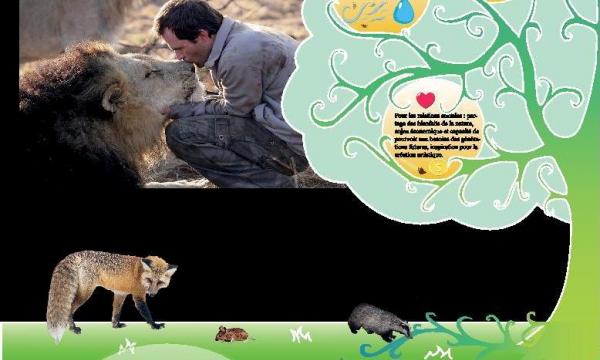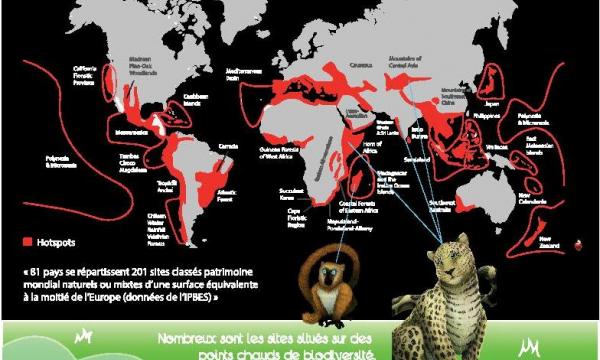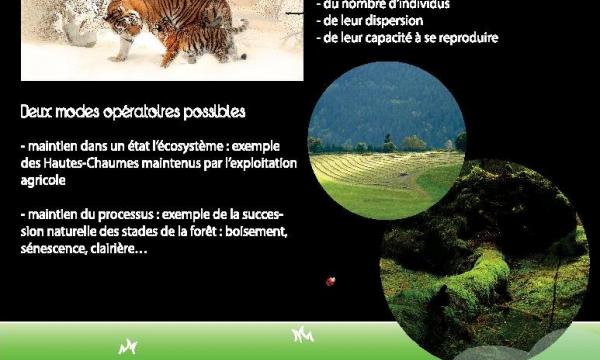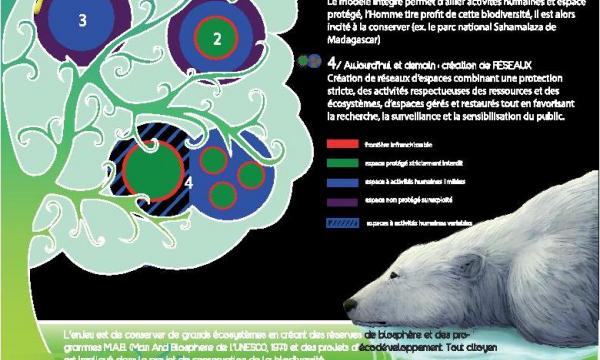Biodiversité 2 - Crise de conscience - English version
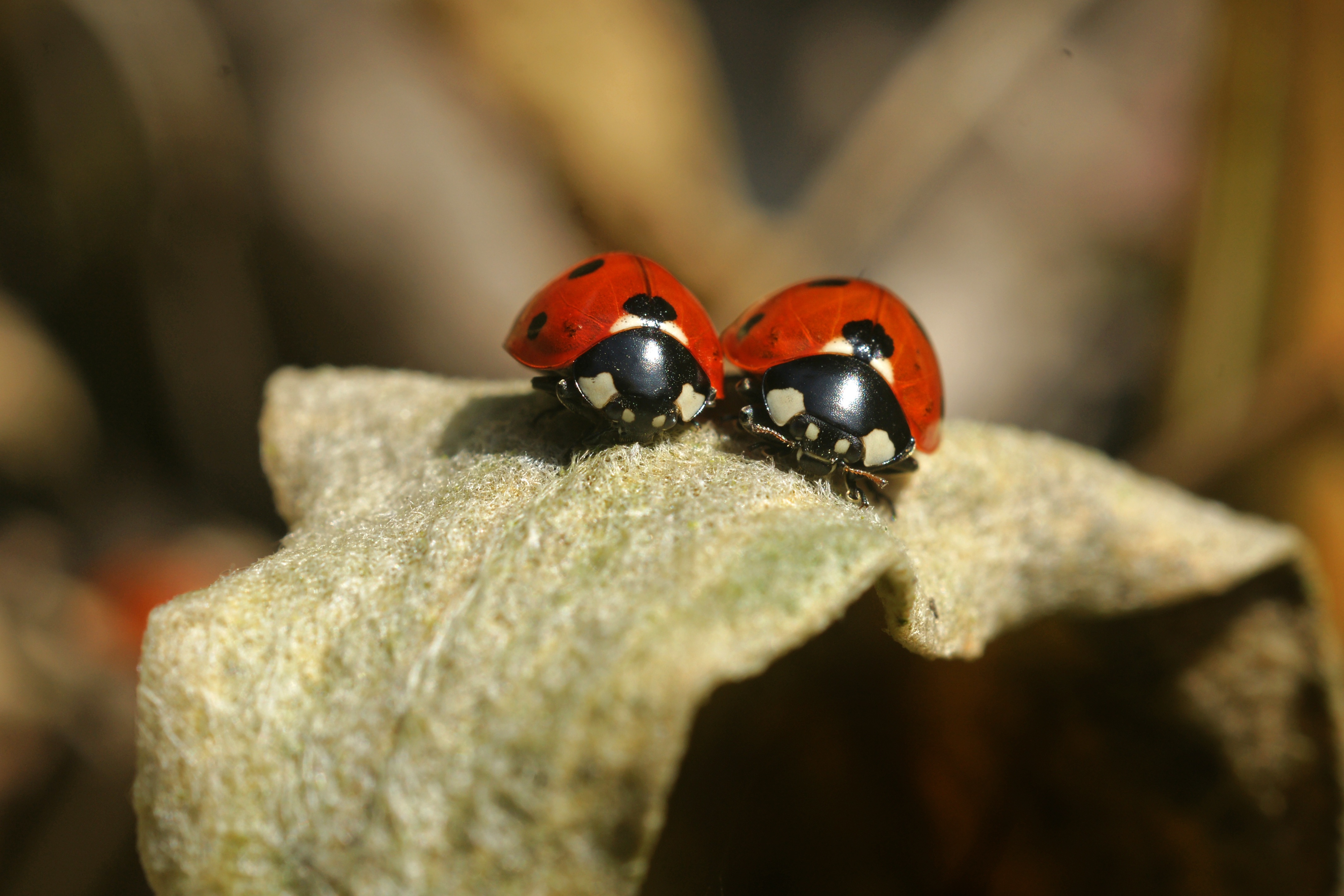
The biodiversity ?
The term Biodiversity ( bios in Greek: life) is a recent term created in the 1980s and the definition was set in 1988 at the 18 th General Assembly of the IUCN (International Union of Nature Conservation) in Costa Rica as the variety and variability of all living organisms. In the primary sense, biodiversity refers to all the diversity of living things and biological communities on our planet. Biodiversity can be considered at three levels:
Genetic diversity
This is the genetic variation within species, not only within populations but also between geographically separated populations of the same species. This genetic diversity is maintained and transmitted by reproduction. It is not only about the expression of the characteristics of the individuals (for example the eye colour or resistance to a disease) but also one of the drivers of the evolution of the species.
Specific diversity
It includes all species on Earth. A species is defined globally as an evolutionary line within which individuals can reproduce with each other and to give viable offspring, themselves able to interbreed. Today, nearly two million species are known and described scientifically with a binomial Latin name. It is estimated that there are probably 5 to 10 times as many to discover.
Ecosystem diversity
It defines the diversity of assemblies of populations belonging to different species. These assemblies of species are designated by ecologists as communities. We speak of ecosystem when we consider communities in their physicochemical environment. Ecosystem diversity refers to the diversity of our planet's ecosystems that can be as different as a forest, a pond, a mountain lawn, but also an animal and its intestinal "flora".
Biodiversity crises: The famous five?
It is considered that 90 to 99% of the species that existed on Earth are now extinct as a result of the natural extinction process.
Indeed, species have limited life spans that range from one million years (Myr) in mammals to several million years for some marine invertebrates.
However, the history of our planet has been punctuated by several major biological crises that have led to massive extinctions of species. A major biological crisis is defined as being rapid (at the geological time scale), affecting all planetary ecosystems and leading to the extinction of more than 75% of species. The origin of crises is to be found in natural events such as volcanism, changing climates with fluctuations in the level of the oceans, the fall of meteorites or even a combination of these factors. Some evolutionary lineages disappear like dinosaurs while others diversify or appear as did mammals and flowering plants. This is the story of life on the planet.
Of all the biological crises identified through the fossil record, five crises are considered major crises:
- The crisis of the Upper Ordovician -450 Myr: Cause not clearly established. Possibly a strong glaciation caused the lowering of the sea level.
- The Upper Devonian crisis -370 Myr: Cause not clearly established. Possibly a large glaciation would have caused the lowering of the sea level.
- The crisis of the Permian-Triassic boundary -250 Myr: Probably the most devastating with the disappearance of 85 to 95% of marine species and 70 to 77% of terrestrial vertebrate families. This massive extinction took place gradually over a period of 200 000 years, with a mass extinction concentrated over 20 000 years. The biosphere is devastated: coniferous forests, tree ferns, giant amphibians, sea scorpions, trilobites have been decimated. Two possible causes with the fall of a meteorite of 11 km diameter correlatively with intense volcanic activity on the planet or the proliferation of a methane-producing microbe whose activity has profoundly modified the carbon cycle.
- The crisis of the Triassic-Jurassic boundary -205 Myr: More than half of the planet's biodiversity disappears. This is the reign of the great dinosaurs. The causes are not yet clearly identified (massive volcanic eruptions, increased CO2 levels or meteorite impact).
- The Cretaceous-Tertiary Crisis -65 Myr: All kingdoms combined, nearly six to eight species out of ten disappear, including the famous dinosaurs. The probable cause is the fall of a meteorite of about ten kilometers in diameter in the region located in present-day Yucatan, in north-western Mexico.
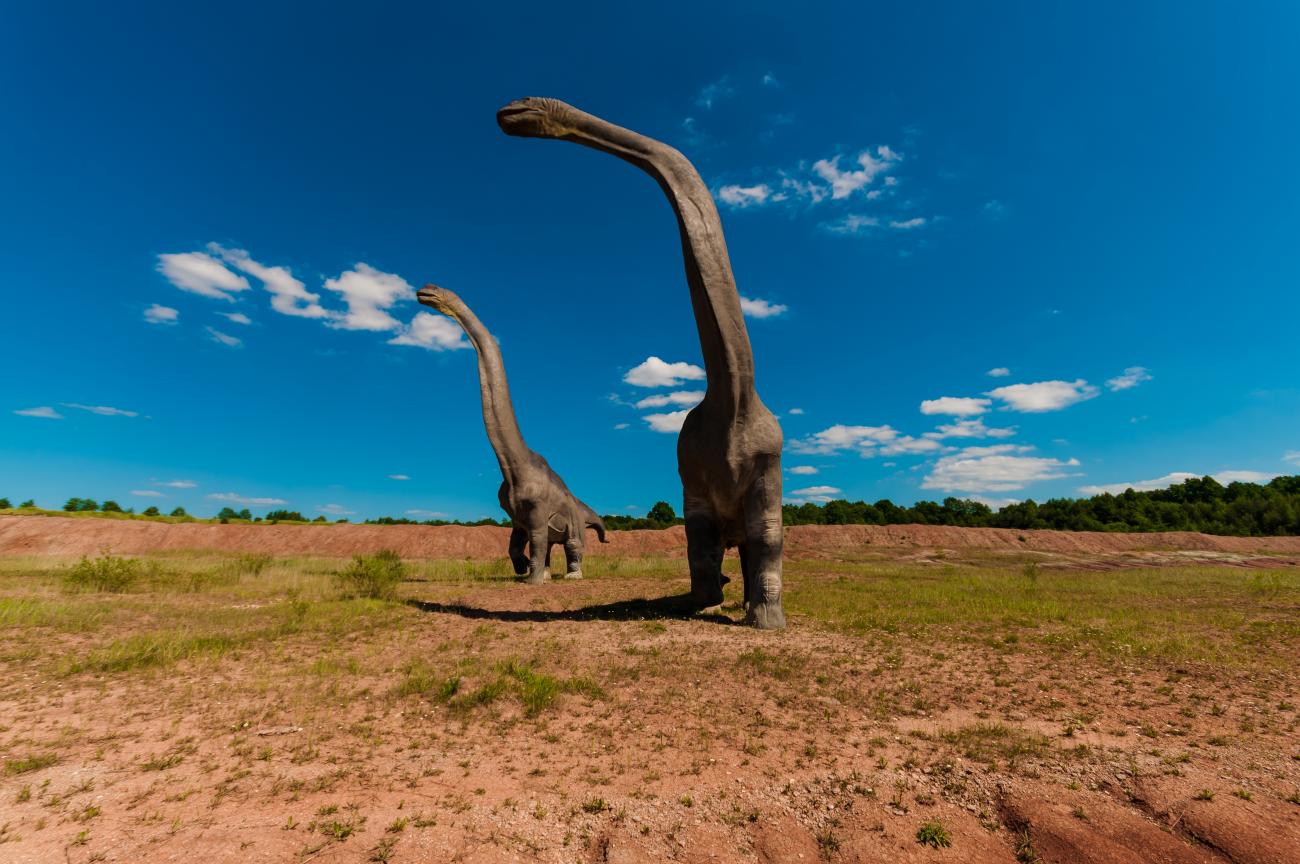
The World Ocean: the other side of the crisis
The world ocean, traditionally subdivided into five oceans and several dozen seas, covers about three quarters of the Earth's surface. This represents nearly 95% of the volume offered to life on our planet, where 13% of the world's biodiversity lives. However, most of this marine biodiversity is still unknown and 70 to 80% of the species have yet to be discovered and described. In addition to organisms strictly related to salt and marine waters, this includes coastal species (foreshore, brackish water, lagoons, estuaries, mangroves), semi-aquatic species (seabirds, sea otters, seals, walruses, etc.) that depend on the sea for part of their life cycle, and some species that perform part of their life cycle in fresh water (eels, salmonids, sturgeons, etc.).
It is also estimated that more than 60% of the total global value of ecosystem services is provided by marine ecosystems.
However, the general decline in global biodiversity is obviously observed in marine ecosystems. WWF's Living Planet 2015 report shows that marine vertebrate populations declined by nearly 49% between 1970 and 2012. Some remarkable habitats such as coral reefs, which are home to nearly 25% of marine biodiversity, are particularly affected, with three-quarters of them estimated to be threatened.
The main causes are:
- Land pollution: globally, 60% of the world's population lives less than 100 km from the coast, and these human activities are responsible for 80% of marine pollution with the discharge of sewers, the discharge of plastic products and industrial toxic waste and the runoff of fertilizers. It is estimated that 35,500 tonnes of micro-plastics drift into the global ocean.
- Overexploitation by industrial fishing leading to the rapid decline of fish populations and a halt to the recovery of the population stock.
- Tourism: airport buildings, cruise ships, artificial beaches, marinas, etc. For example, in one week, an average cruise ship produces nearly 5 million litres of wastewater, contaminated or oily, as well as 8 tonnes of rubbish.
- Climate change: increase in average ocean temperature, acidification, extreme weather events and sea level, with strong impacts on habitats and species. Polar areas are the most exposed. In 30 to 40 years, the Arctic Ocean could become ice-free in summer.
- Extractive industries at sea (oil, gas) and in coastal regions (mining) contributing to climate change through the emission of CO2 and methane, and the contamination of waters by pollutants.
Toward a sixth mass extinction?
Through numerous studies and publications, scientists testify that planetary biodiversity is experiencing a new mass extinction. The current rate of species extinction is the highest ever recorded with 17 000 to 100 000 extinctions each year or three species extinct every quarter of an hour. By 2050, it is estimated that 25 to 50% of the species will have disappeared, including in the oceans.
The demography of the human population and its activities are the cause of this sixth biological crisis. While the world population is estimated at 1.7 billion in 1900, it reaches 7 billion in 2011 and will probably exceed 9 billion in 2050. Today, all the ecosystems of the planet are directly or indirectly affected by the impacts of humanity from the richest in biodiversity such as coral reefs and tropical forests to the most singular in high mountains or the poles.
Despite the first significant warnings launched in the 1950s by the scientific community and despite attempts by states to mobilize to preserve natural and biological resources from the first Earth Summit in Stockholm in 1972, recent indicators show no signs of slowing down the speed and scale of this biological crisis. The silent springs, the immaculate windshields, the cultivated, industrialized or urbanized landscapes now permeate our collective experiences of nature.
A population that increases: The number of humans exceeded 6 billion at the end of the 20th century. In the coming decades, the growth of the world population will probably slow down to stabilize its growth around 10 billion by 2100. Over the past two centuries, this demographic and technical evolution has grown exponentially, this situation is new in the story of life.

